马尔 – 18inch Wooden (MAAR)
¥ 6,460.00
| 默认规格(1英寸=2.54厘米) | |
| 刀片尺寸:18英寸 | 手柄尺寸:6.5英寸 |
| 刀片材质:高碳钢5160 | 手柄材质:木质 |
| 刀片工艺:抛光 | 手柄工艺:抛光 |
| 刀刃锐度:开刃 | 刀刃硬度:55-57 hrc |
| 刀片厚度:10毫米 | 刀鞘材质:牛皮 |
| 附随刀具:有 | 刀身重量:1325克 |
| 总体重量:1800克 | 发布日期:未知 |
| 原产地:尼泊尔 | 发货地:尼泊尔加德满都 |
large khukuri with historic, religious value; a true sacrificial knife; also a no.1 combat khukuri of Gorkhali Soldiers during mid 1700’s..
历史悠久、宗教意义深厚的大型廓尔喀弯刀;真正的祭祀刀具;同时也是廓尔喀士兵在 18 世纪中期的 1 号军刀。
18inch Wooden (MAAR) sacrifical LARGE, machete kukri. Sometimes killing is the only way out..
18 英寸的木制 (MAAR) 献祭大砍刀、弯刀。有时,杀戮是唯一的选择。
religious value of MAAR kukri in Nepal
尼泊尔 MAAR 弯刀在宗教上的意义
Most Nepalese are devoted Hindus. They have been practicing Hinduism since generations and ritual beliefs still go strong even today. Similarly it would be fair to say that the khukuri has also been contributing to all Nepalese to performing some of the religious act of Hinduism. One of the rituals and also traditions of Nepalese has a religious ceremony of beheading domestic animals as an offering to the goddess “Durgamata” during the main Nepalese festival, the “Dashain”. This is where the 18” khukuri chiefly comes into play, where it reveals its true identity, where it demands a kill and respect as a true slaughter power house.
大多数尼泊尔人都是虔诚的印度教徒。他们世代信奉印度教,即使在今天,仪式信仰仍然十分牢固。同样可以说,廓尔喀弯刀也一直在帮助所有尼泊尔人履行一些印度教的宗教行为。尼泊尔的一个仪式和传统是在主要的尼泊尔节日“达萨拉节”期间,将家畜斩首作为献给女神“杜尔加女神”的祭品。这就是 18 英寸廓尔喀弯刀的主要作用,它在那里展现其真正的身份,它需要杀死动物并作为真正的屠宰动力源而受到尊敬。
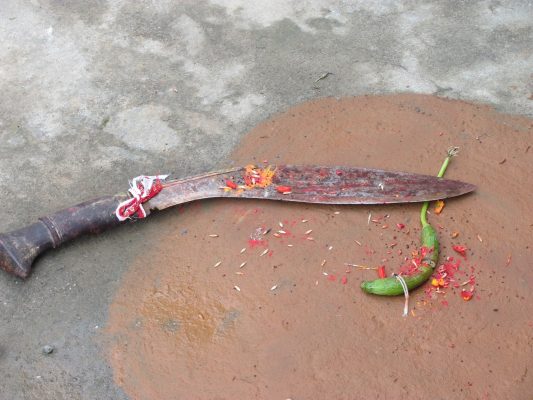
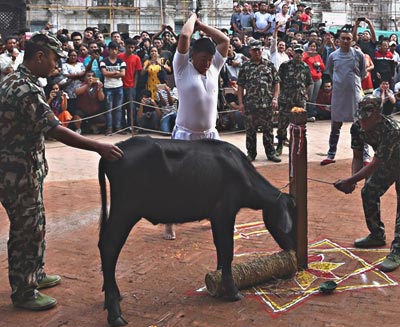
This is a large type of kukri used for sacrificing animals during festival, therefore the name 18” Marr (Sacrificial). “Dashain”, the main festival of Nepalese, which mostly falls in October is celebrated by sacrificing animals (buffaloes/goats) after necessary rituals are done on the 9th day called “Maar” during the 10th day long festival. It is a customary in Nepal that families celebrate the festival by purchasing domestic animal from locals and sacrificing it at home or mostly at temples as an offering to the goddess “Durgamata”. There is also a myth that the whole community where the ceremony is performed will suffer misfortune if the beheading is not done in one clean stroke. All the forging and making of the knife is done by hand using only conventional domestic tools. It takes three men a one whole day to finish this kukri.
这是一种大型弯刀,用于节日期间祭祀动物,因此得名 18 英寸马尔(祭祀)。尼泊尔的主要节日“达莎因节”主要在 10 月举行。人们在 10 天的节日中,在第 9 天称为“马尔节”的节日里,在进行必要的仪式后,通过祭祀动物(水牛/山羊)来庆祝。在尼泊尔,有一个习俗,即家庭通过从当地人那里购买牲畜并在家中或主要在寺庙中作为对女神“杜尔加女神”的祭品来庆祝节日。还有一个神话,如果在寺庙中进行的斩首没有一次干净地完成,那么进行仪式的整个社区都会遭受厄运。所有刀具的锻造和制造都是用手完成,只使用传统的家用工具。 三个男人需要一整天的时间才能完成这把廓尔喀弯刀。
Historic existence among ‘Gorkhalis’ ( mid 1700’s ) >> 18″ MAAR is a modern version of the classic heavy kukris of the era..
“廓尔喀人”(约 18 世纪中期)的历史存在 >> 18 英寸的 MAAR 是那个时代经典重型廓尔喀刀的现代版本。
Historically speaking, 18” khukuri was primarily made for religious ceremonies and also as a no.1 combat khukuri for the soldiers. It was also made for the honorary and distinguished people to mark a deed or one’s position. The khukuri is believed to have existed centuries back but was only realized during the Gorkha campaign of uniting Nepal as one big country in mid 1700’s. The battles witnessed excessive use of large khukuris by Gorkhalis (Gorkha Army) which has also been documented and exhibited in the National Arsenal Museum in Kathmandu, Nepal.
从历史上看,18 英寸的廓尔喀弯刀最初是为了宗教仪式和作为士兵的 1 号战斗廓尔喀弯刀而制作的。 它也为荣誉和杰出人士制作,以纪念功绩或职位。 据说廓尔喀弯刀存在于几个世纪前,但直到 18 世纪中叶廓尔喀人将尼泊尔统一为一个大国的运动中才被发现。 廓尔喀士兵(廓尔喀军队)在战斗中大量使用大型廓尔喀弯刀,这在尼泊尔加德满都的国家兵工厂博物馆也有记载和展出。
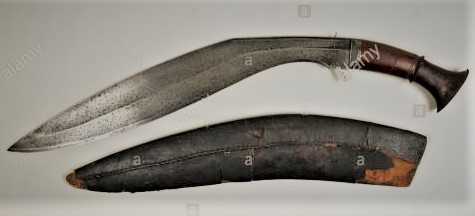

The modern history of the 18” is however different. The khukuri because of its enormous size and not much of use for this modern techno world was in the verge of extinction. The importance and historical value was forgotten. It was just used in the festival just once in a year when the kukri really had to be used. It is only after the existence of KHHI, TB BK, the master craftsman, who started massively producing and promoting the khukuri the magnitude of it was once again recovered and realized. The massive production brought lower cost and intense promotion brought awareness and thus Nepalese once again got back their almost-gone pride.
然而,18 英寸的现代历史却截然不同。由于廓尔喀弯刀体积巨大,在现代科技世界中鲜有用途,因此濒临灭绝。其重要性和历史价值被遗忘,仅在一年一度的节日中使用,而廓尔喀弯刀正是需要使用的时候。直到 KHHI 和大师级工匠 TB BK 的出现,他们开始大规模生产和推广廓尔喀弯刀,才再次意识到其重要性。大规模生产降低了成本,密集的推广提高了认知度,从而使尼泊尔人重新找回了他们几乎消失的骄傲。
“Maar” produced by KHHI (techncial aspects)
“Maar”由KHHI军工厂(技术方面)制造
a heavy-duty and lethal knife at the same time… sharp and scary mammoth at offering @ Khukuri House…
这是一把沉重而致命的刀,既锋利又可怕,就像尼泊尔军刀之家提供的猛犸象一样…
The blade measures 18” long and has a wooden handle thus the definite name. The shape resembles the “BhojPure” version; fat, thick and heavy. Brass fixtures are fitted in the handle to give a dashing look. The normal buffalo hide leather scabbard also has a protecting brass chape to give an overall matching look. 18” Wooden also comes with two accompanying knives in a considerable size, about 4 inches bladed; a good usable size.
刀身长 18 英寸,木制手柄,因此得名。其形状类似于 BhojPure 版本,厚重。黄铜饰件镶嵌于手柄,尽显别致。普通水牛皮刀鞘搭配黄铜刀靴,整体外观和谐。18 英寸 木刀还配有两把尺寸相当的随身刀,刀刃约 4 英寸,十分实用。
18” wooden khukuri is also a good utility knife where heavy duty work of cutting is required. It works like a Machete; a perfect knife for hacking, chopping, clearing motherly things not possible from small or standard sized kukri knives. The wooden handle gives a traditional look. It also gives a strong and sturdy grip needed to execute big acts.
18 英寸木制廓尔喀弯刀也是一把很好的实用刀具,适用于需要切割重型作业。它工作原理类似于砍刀;这是一把用于砍伐、切碎和清理小号或标准尺寸的廓尔喀弯刀无法完成的母性物品的完美刀具。木制手柄呈现出传统的外观。它还提供了执行大型操作所需的牢固而结实的抓地力。
Additionally in current time this khukuri is frequently used as decorative piece due to its large catchy size.
此外,在现代,这种廓尔喀弯刀因其巨大醒目的尺寸而经常被用作装饰品。
Materials: Water buffalo leather scabbard, rosewood handle, 2 x accompanying knives
材质:水牛皮刀鞘,红木手柄,附赠两把小刀
Origin: KHHI, Kathmandu, Nepal
来源:加德满都,尼泊尔 KHHI 军工厂
只有已购买此产品的登录客户才能发表评价。

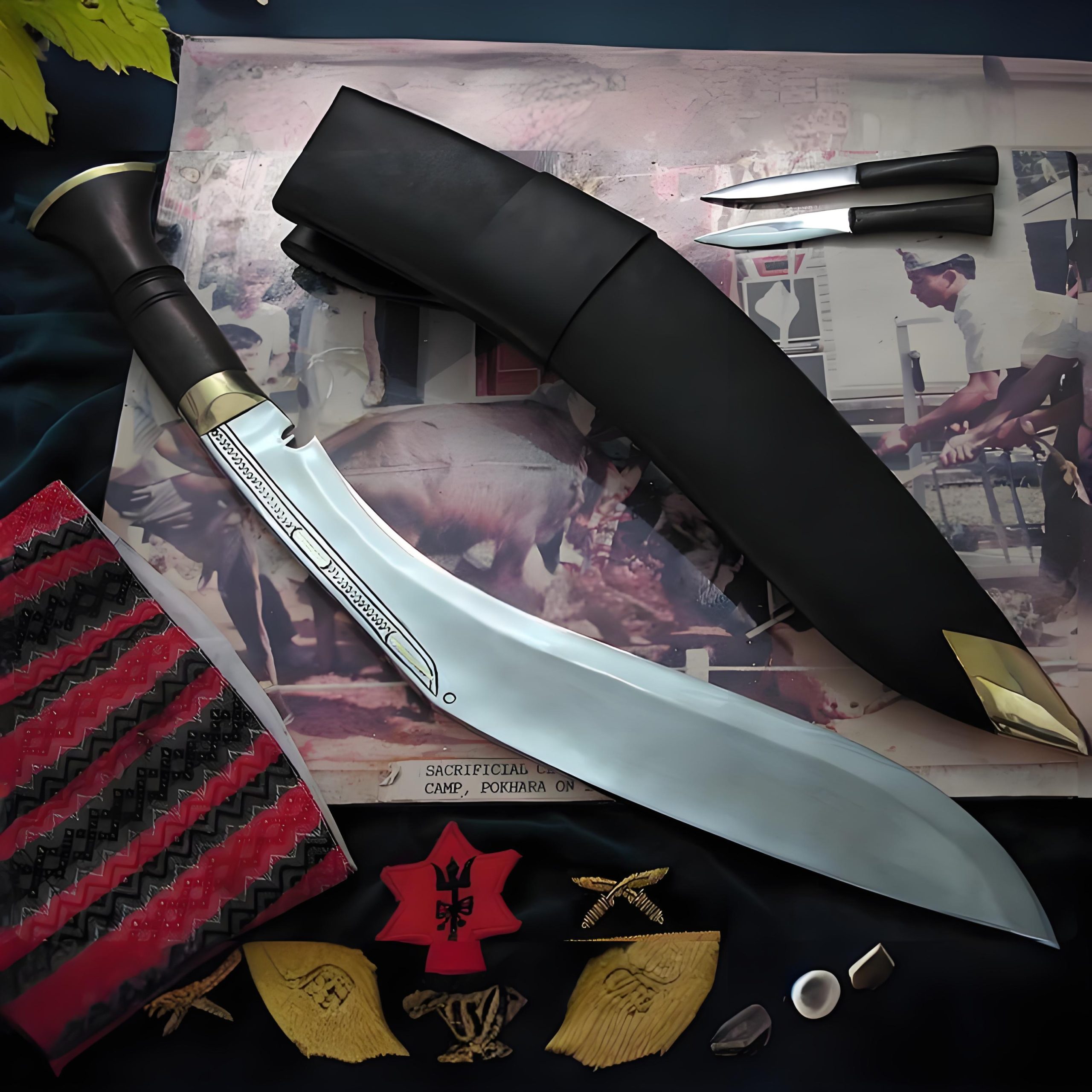
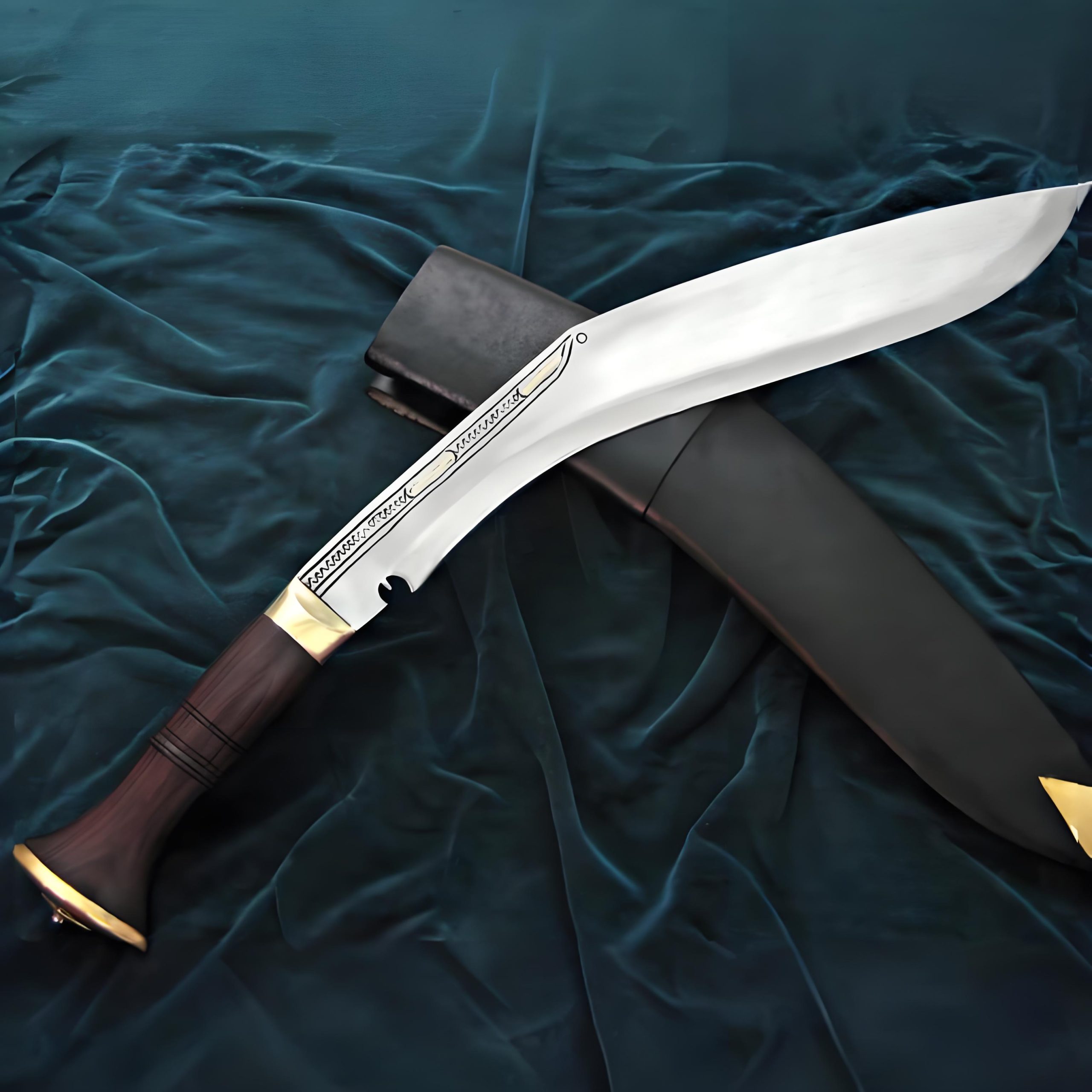
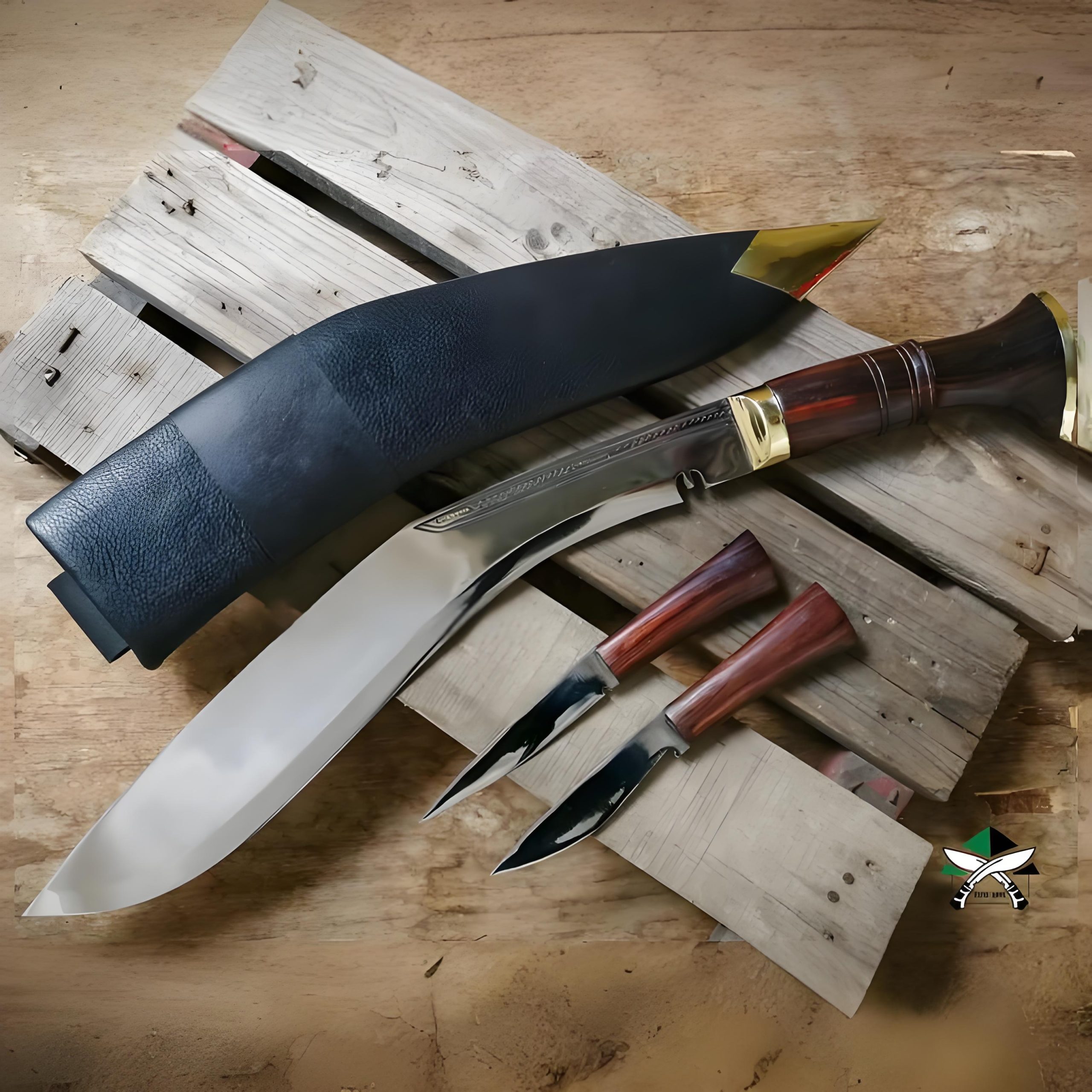
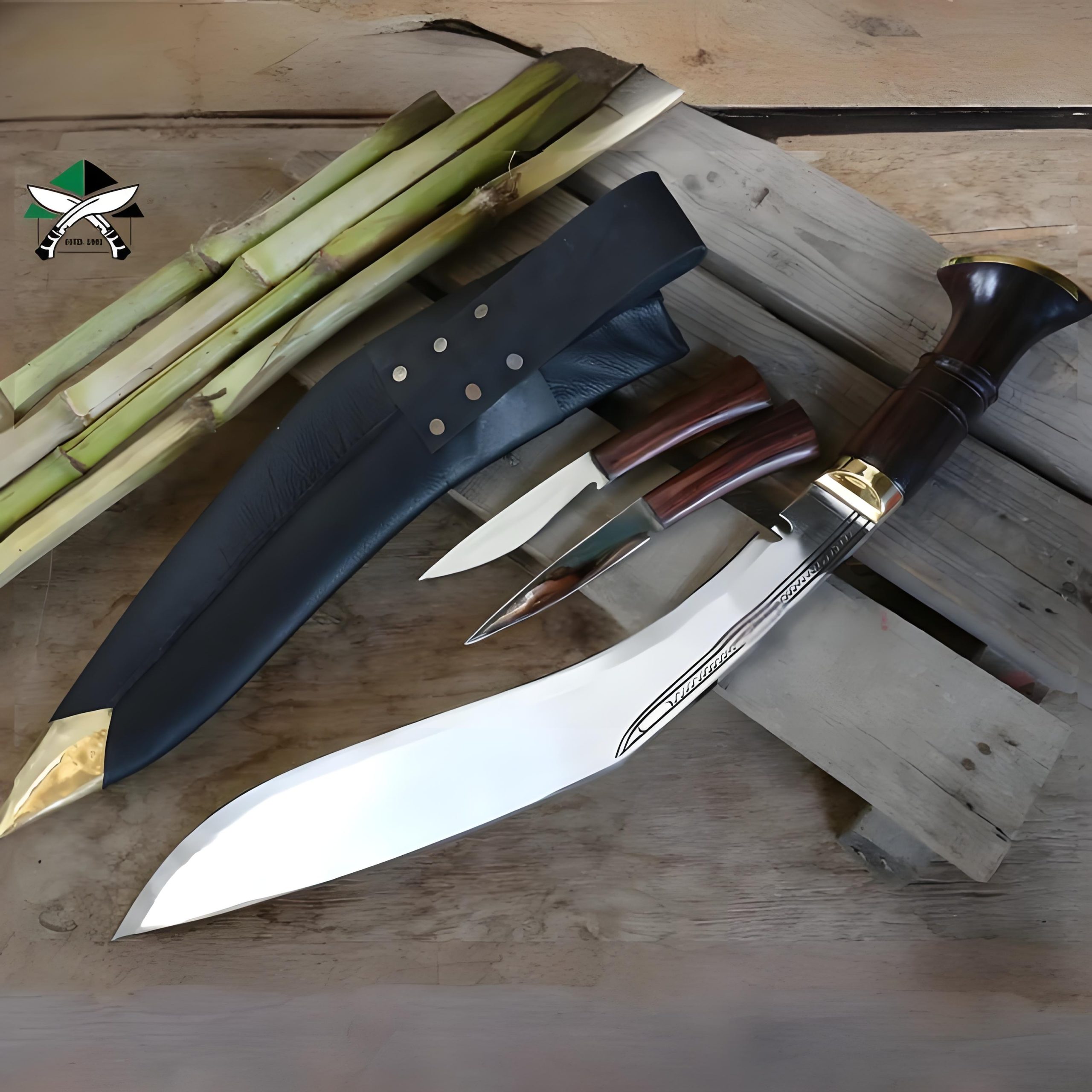
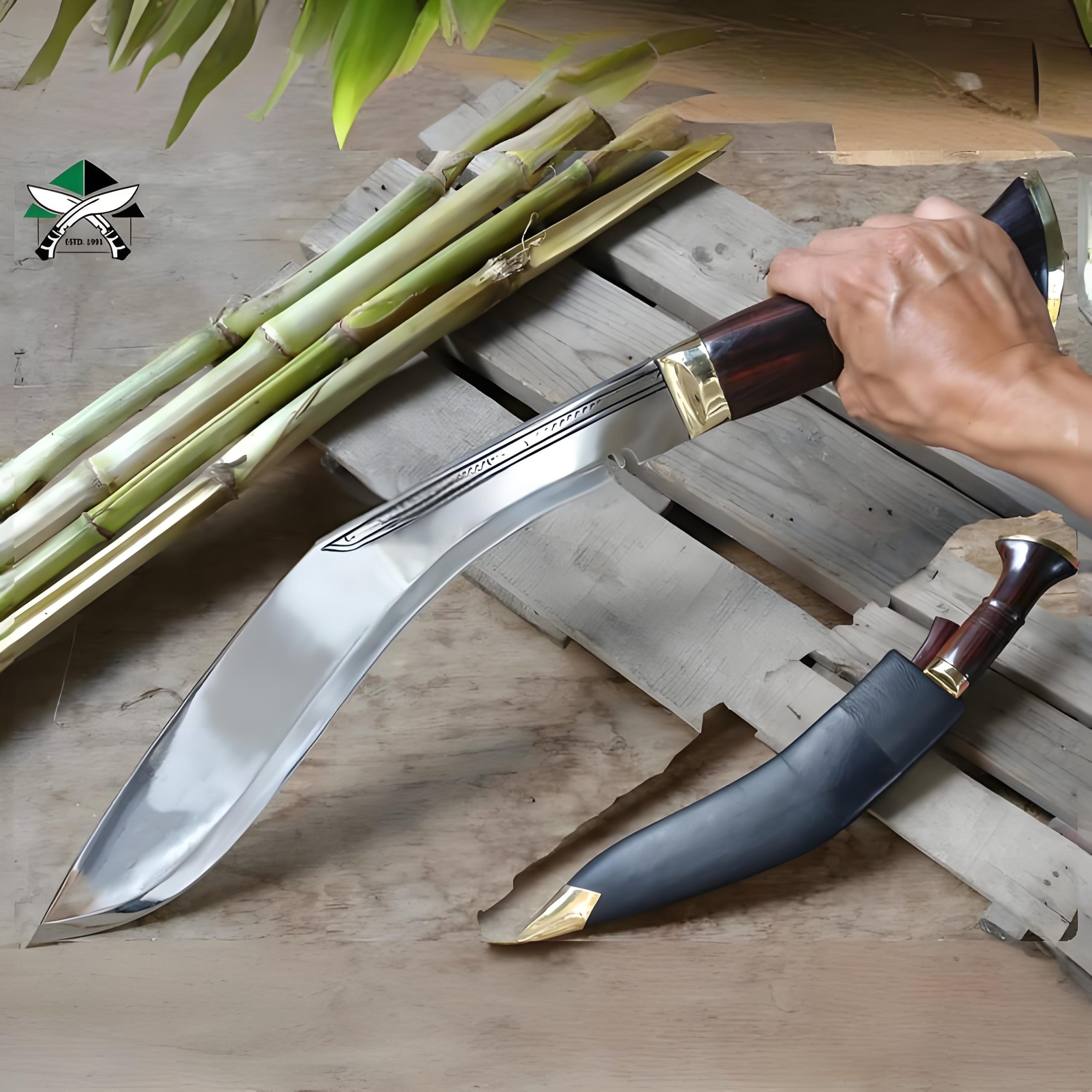
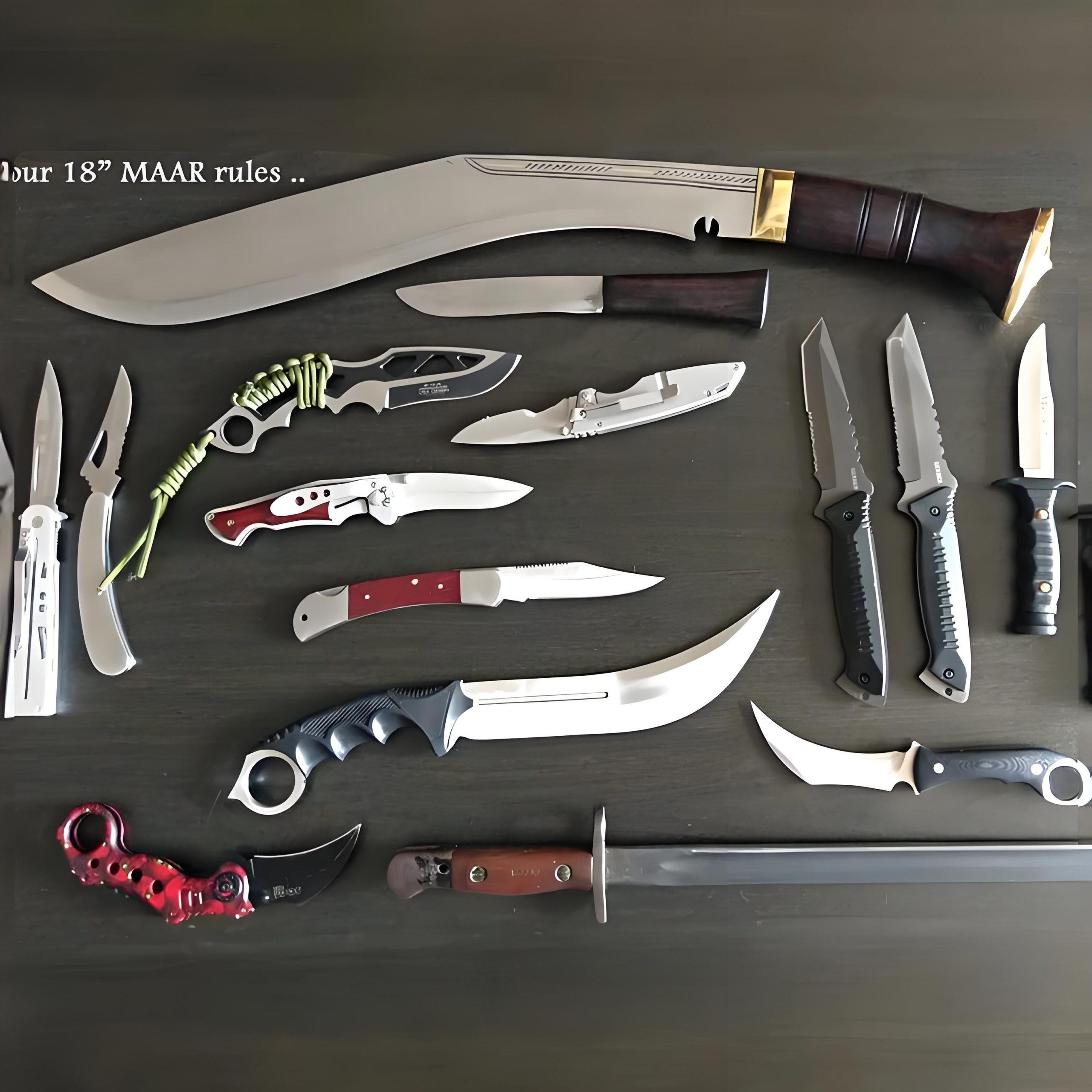
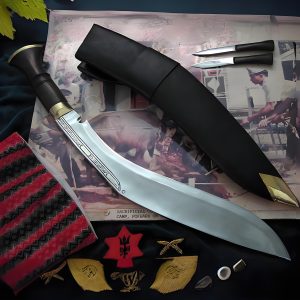
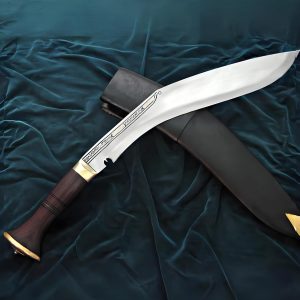
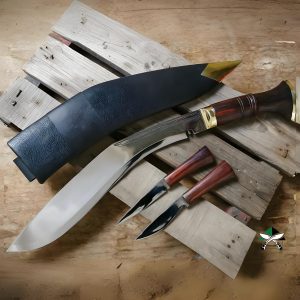
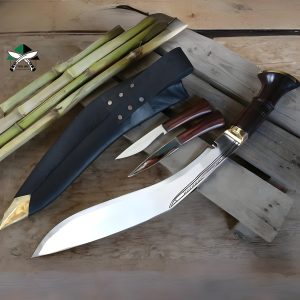
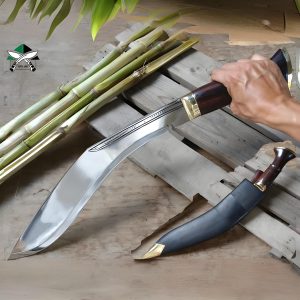

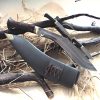
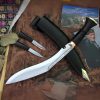
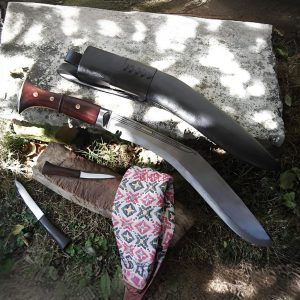
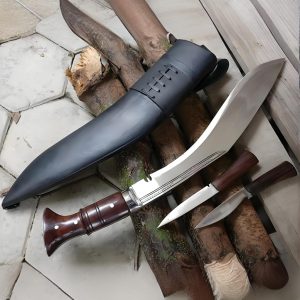
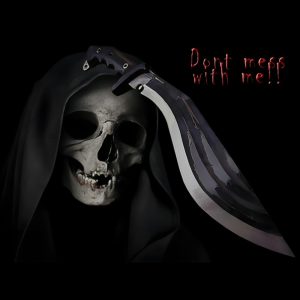

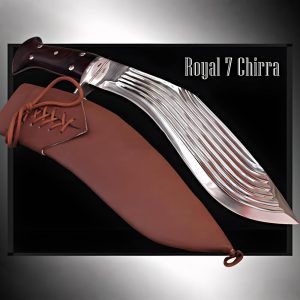

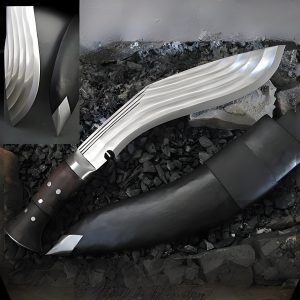
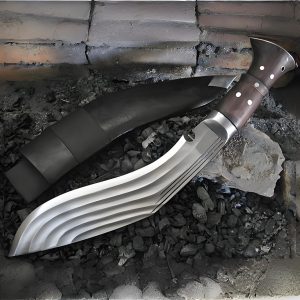
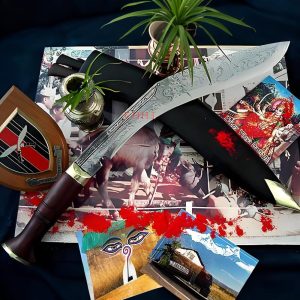
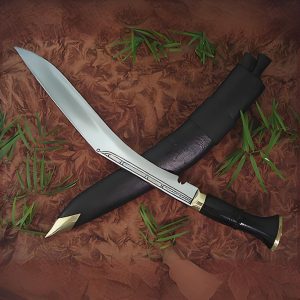
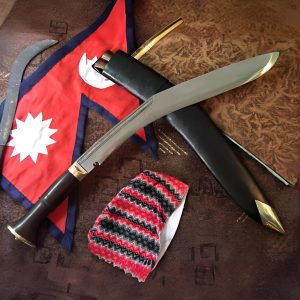
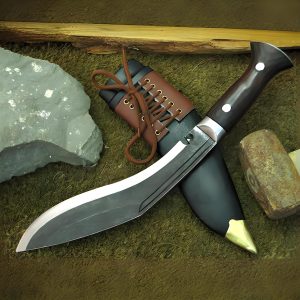

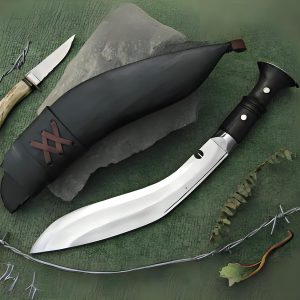
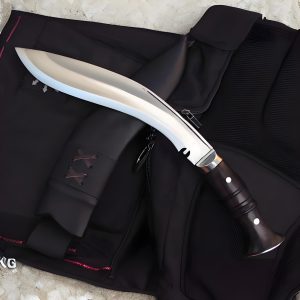
评价
目前还没有评价